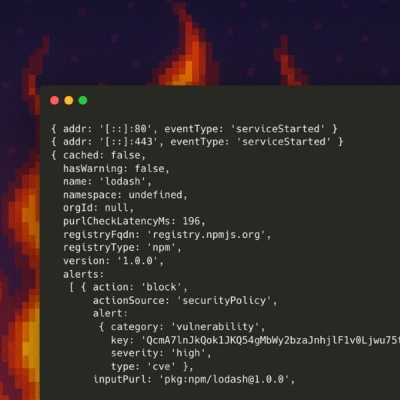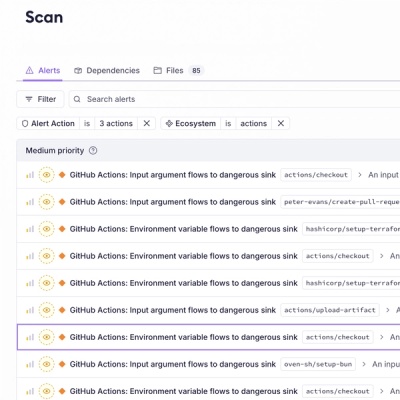
Product
Introducing Socket Firewall Enterprise: Flexible, Configurable Protection for Modern Package Ecosystems
Socket Firewall Enterprise is now available with flexible deployment, configurable policies, and expanded language support.
@startupjs/bundler
Advanced tools
Opinionated scripts and configs to develop a react-native-web project
react-native-svg: >= 12.1.0
TBD
Pass ASYNC=1 env var when building to enable the asynchronous chunks
support. This will make each node module from /node_modules/
and each component from the /components/ folder to be its own small chunk
loaded asynchronously.
This is useful when you are using dynamic import() in your code.
When the ASYNC=1 is passed, the files with the extension .async.js
will take priority over the plain .js files. This enables you
to move the asynchronous dynamic import() statements into their own files.
Duplicating your dependencies in .js and .async.js files enables
you to have your codebase running in environments which don't
support the dynamic import() yet, for example the react-native Metro builder.
Your production server must have HTTP/2 support, otherwise you'll have a connection
limit of around 6 connections per hostname and you will notice your website
loading VERY SLOOOOW in production (if you set the Network Throttling to Slow 3G).
If you use Google Load Balancer and serve your content through HTTPS, then you already have the HTTP/2 enabled without having to handle HTTP/2 in your Node.js app:
https://ma.ttias.be/view-http-spdy-http2-protocol-google-chrome/
We can export variables directly from stylus into js. Here is an example:
ShoppingCart/index.styl file:// allow overrides from global configuration
$this = merge({
bgColor: $UI.colors.primary,
height: 10u
}, $UI.ShoppingCart, true)
.root
height: $this.height
background-color: $this.bgColor
:export
config: $this
colors: $UI.colors
foobar: 42
colors, config and foobar in the ShoppingCart/index.js file:import STYLES from './index.styl'
const {
config: { bgColor },
colors,
foobar
} = STYLES
export default function ShoppingCart () {
console.log('Background color is:', bgColor)
console.log('Available colors:', colors)
console.log('Magic number FooBar:', foobar)
return <View styleName='root' />
}
Copyright (c) 2018 Pavel Zhukov
FAQs
Opinionated scripts and configs to develop a react-native-web project
The npm package @startupjs/bundler receives a total of 923 weekly downloads. As such, @startupjs/bundler popularity was classified as not popular.
We found that @startupjs/bundler demonstrated a not healthy version release cadence and project activity because the last version was released a year ago. It has 6 open source maintainers collaborating on the project.
Did you know?

Socket for GitHub automatically highlights issues in each pull request and monitors the health of all your open source dependencies. Discover the contents of your packages and block harmful activity before you install or update your dependencies.

Product
Socket Firewall Enterprise is now available with flexible deployment, configurable policies, and expanded language support.

Security News
Open source dashboard CNAPulse tracks CVE Numbering Authorities’ publishing activity, highlighting trends and transparency across the CVE ecosystem.

Product
Detect malware, unsafe data flows, and license issues in GitHub Actions with Socket’s new workflow scanning support.